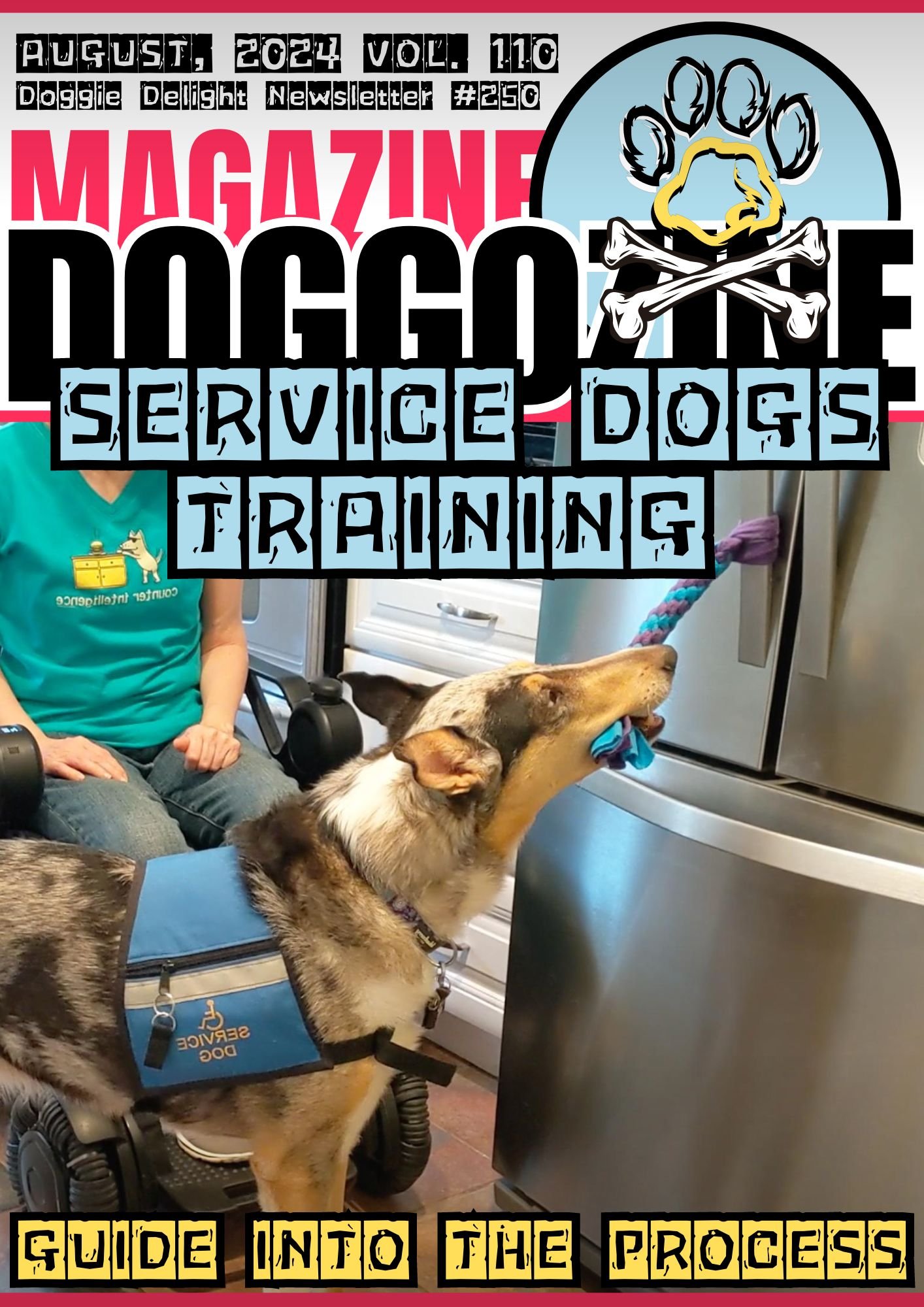
MASTERING THE TRAINING PROCESS FOR SERVICE DOGS: A STEP-BY-STEP GUIDE
Have you ever marveled at the incredible bond between a service dog and their human companion? From guiding the visually impaired to providing support during anxiety attacks, these four-legged heroes play a crucial role in enhancing the quality of life for individuals with disabilities. But have you ever wondered what goes into training these remarkable service dogs?
The Complexities Of Training Service Dogs
Let’s delve into the intricate world of service dog training. This article is offering a comprehensive roadmap for those looking to embark on this rewarding journey. Whether you’re considering training your own service dog or seeking insights into the training process, this guide is your go-to resource for all things service dog related.
Join us as we explore the essentials of choosing the right breed. Mastering advanced training techniques, and navigating the complexities of training a service dog from start to finish. Get ready to unlock the secrets behind successful service dog training. Empower yourself to make a positive impact in the lives of others through the power of canine companionship.
Introduction to Service Dogs Training
Service dogs play a crucial role in assisting individuals with disabilities. Their purpose is providing the support and independence that these people need to navigate their daily lives. These highly trained canines are not just pets! They are reliable partners that can perform specific tasks to mitigate the challenges associated with disabilities.
The training process for service dogs is comprehensive and requires time, dedication, and expertise. It involves teaching them a range of skills and behaviors that enable them to assist individuals with various disabilities. Some of these disabilities are visual impairments, mobility limitations, and psychiatric conditions.
Service dog training often begins when the dogs are still puppies. Early socialization and exposure to different environments are essential for their development. Trainers use positive reinforcement techniques to shape desirable behaviors and help dogs understand the specific tasks they need to perform.
Task-specific training
The training process includes obedience training, task-specific training, and public access training. Obedience training focuses on teaching the dog basic commands, such as sit, stay, and heel. Task-specific training involves teaching the dog specialized tasks tailored to the individual’s disability. Some of the tasks are retrieving objects, opening doors, or providing balance support. Public access training ensures that the dog is well-behaved and comfortable in various public settings. Always adhering to the relevant laws and etiquette.
It’s important to note that service dogs are not limited to just physical disabilities. They can also provide support for individuals with psychiatric conditions, such as anxiety disorders or PTSD. These dogs are trained to recognize and respond to symptoms, providing comfort and assistance when needed.
They not only assist with specific tasks but also provide emotional support and independence. They are helping individuals with disabilities navigate the world with confidence. In the following sections, we will delve deeper into the different aspects of service dog training. These sections will include understanding the basics, acquiring a service dog, and the importance of obedience skills.
🔑 Key Points: By going through rigorous training, service dogs become reliable companions that can significantly improve the lives of their handlers.
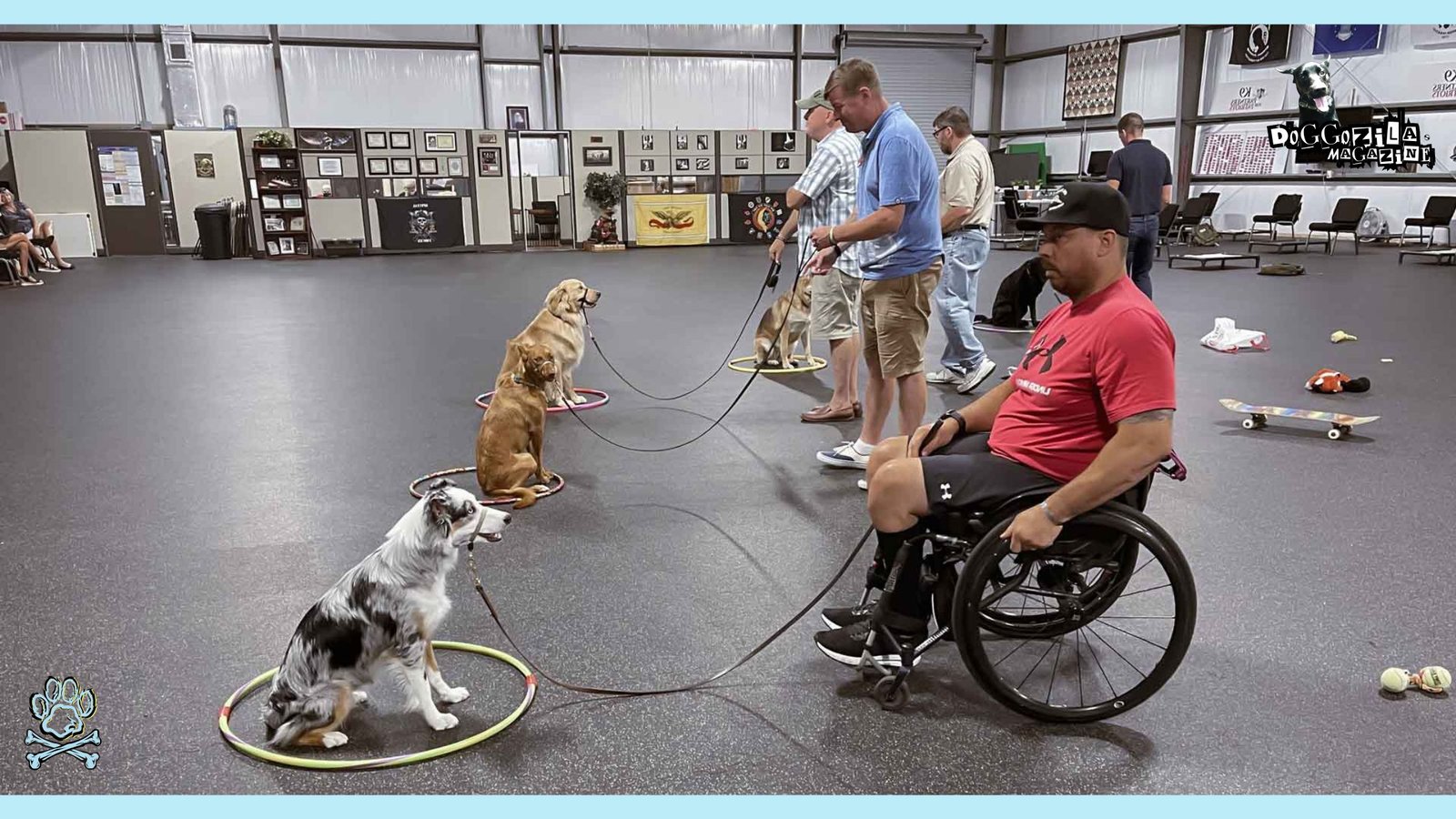
UNDERSTANDING THE BASICS OF SERVICE DOGS
A service dog is a highly trained canine that assists individuals with disabilities in performing tasks and activities they may otherwise struggle with. These remarkable animals not only provide practical assistance but also offer emotional support and companionship.
Defining Service Dogs
A service dog is specifically trained to perform tasks that mitigate the impact of a person’s disability. These tasks can range from guiding visually impaired individuals to retrieving items for those with limited mobility. Service dogs undergo extensive training to ensure they can perform their duties reliably and safely.
Common Breeds of Service Dogs
There are various breeds that excel in service dog roles due to their temperament, intelligence, and physical attributes.
Some commonly seen service dog breeds include:
- Labrador Retrievers: Known for their friendly and obedient nature. Labrador Retrievers excel in tasks such as guiding visually impaired individuals and alerting to medical conditions.
- Golden Retrievers: With their gentle demeanor and intelligence, Golden Retrievers make excellent service dogs. Usually for individuals with mobility impairments or those in need of emotional support.
- German Shepherds: Often associated with police and military roles, German Shepherds are also well-suited for service dog tasks such as mobility assistance, psychiatric support, and search and rescue operations.
Service Dogs vs. Emotional Support Dogs or Therapy Dogs
It’s important to distinguish between service dogs, emotional support dogs, and therapy dogs.
While all three have a positive impact on individuals’ well-being, they serve different purposes:
- Service dogs are specifically trained to assist individuals with disabilities by performing specific tasks. They are granted legal access to public spaces and are protected under the Americans with Disabilities Act (ADA).
- Emotional support dogs provide comfort and emotional support to individuals with mental health conditions. They do not require specialized training and do not have public access rights in the same way as service dogs.
- Therapy dogs are trained to provide comfort and support to people in hospitals, nursing homes, schools, and other care facilities. They work under the supervision of trained professionals and typically do not have public access rights outside of these controlled environments.
By comprehending the basics of service dogs, including their definition, common breeds, and the differences between service dogs, emotional support dogs, and therapy dogs, individuals can better appreciate the vital role these animals play in supporting people with disabilities.
🔑 Key Points: Understanding the distinction between these roles is crucial, as it helps ensure the appropriate treatment and recognition of each type of assistance animal.
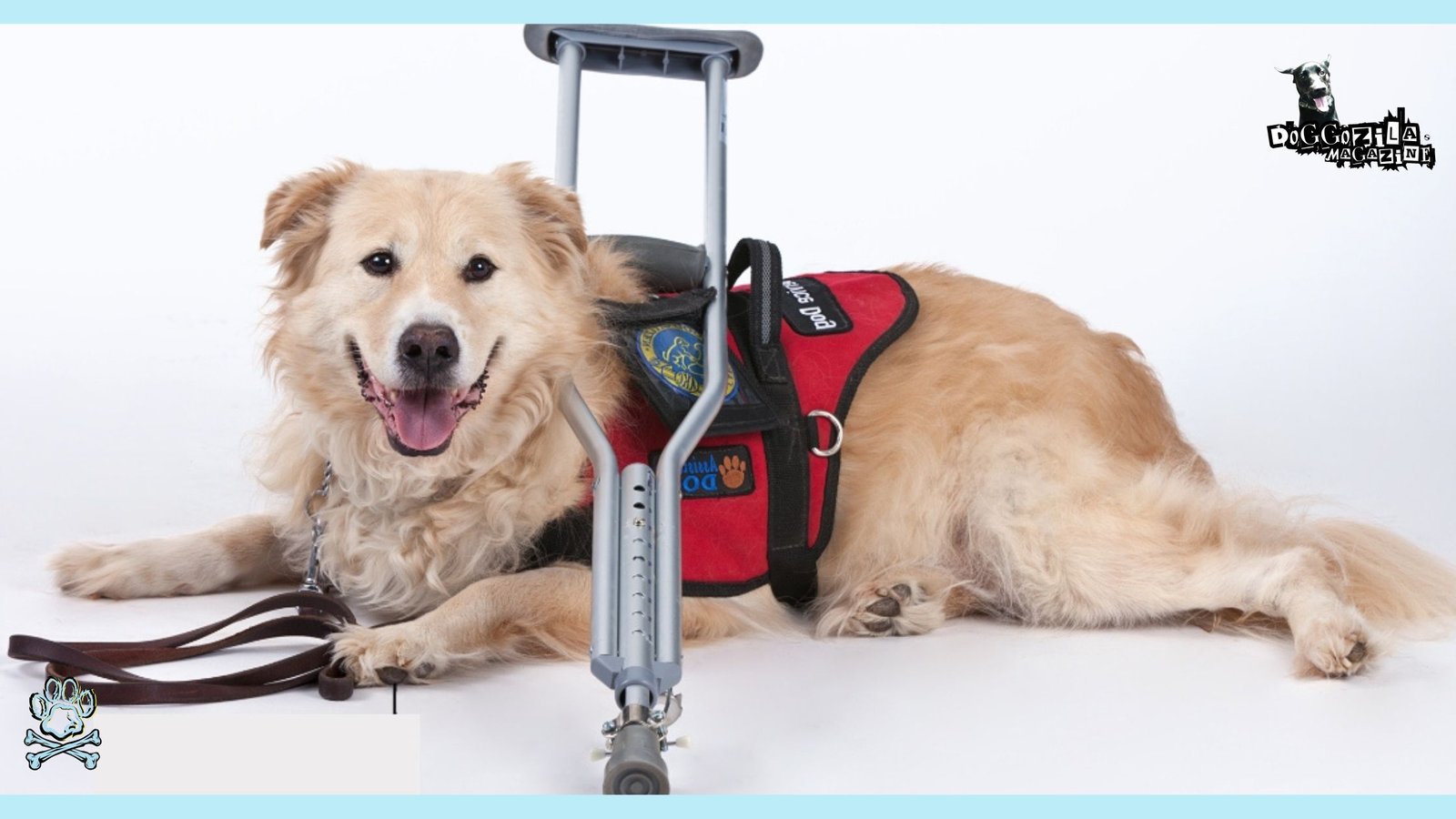
HOW TO OBTAIN SERVICE DOGS
When it comes to obtaining a service dog, there are a few options to consider. Whether you choose to select a trained dog or decide to take on the responsibility of training your own, it’s important to make an informed decision that suits your specific needs.
Selecting a Trained Dog
One option is to obtain a service dog that has already undergone extensive training. These dogs are typically sourced from reputable organizations or agencies that specialize in service dog training. They go through an intensive program where they learn specific actions and tasks to assist individuals with disabilities.
Working with professional trainers and organizations can offer the advantage of a well-trained dog that has already mastered important skills. However, it’s important to note that there may be a waiting list for such dogs, and the cost of a program-trained dog can be significant.
Training Your Own Service Dogs
Alternatively, some individuals may choose to train their own service dog. This option provides the opportunity for a more personal connection and allows the handler to be involved in every step of the training process. However, it requires a significant commitment of time, patience, and resources.
If you decide to train your own service dog, it is crucial to seek guidance and assistance from professional trainers who specialize in service dog training. They can provide valuable expertise and support to ensure that your dog is trained effectively and successfully.
Remember, whichever path you choose, the ultimate goal is to have a service dog that is well-trained and capable of performing specific tasks to assist you in your daily life. Whether obtaining a trained dog or embarking on the rewarding journey of owner training, working with professionals and seeking guidance will help set you and your future service dog up for success.
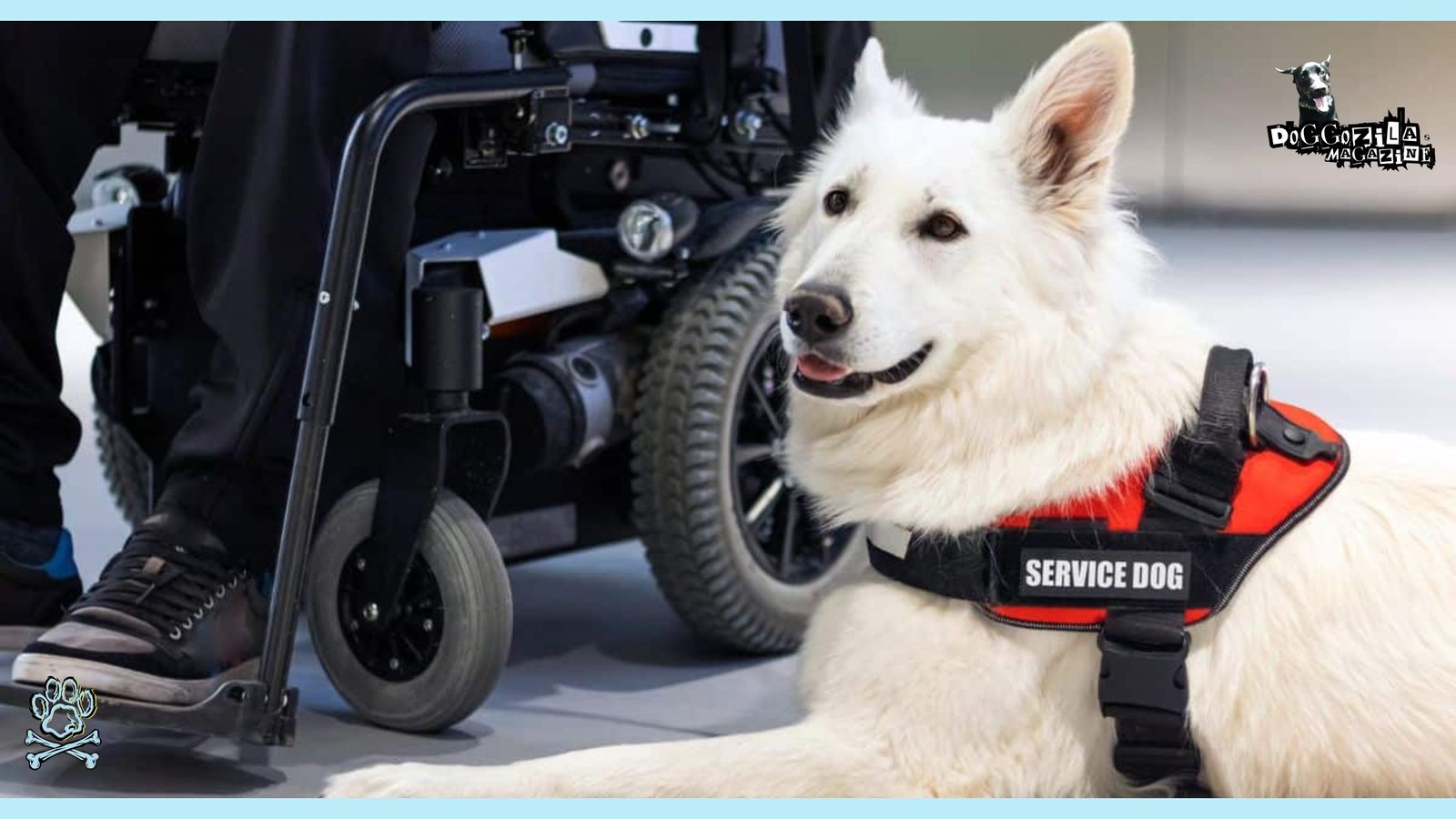
BASIC RULES OF SERVICE DOGS TRAINING
Training a service dog requires adherence to fundamental rules that ensure their proper behavior in public places, their ability to follow commands, and their effectiveness in working in specific environments. By understanding and implementing these rules, handlers can ensure their service dogs are well-prepared for their important tasks.
Proper Behavior in Public Places
One of the key aspects of service dog training is teaching them appropriate behavior in public spaces. This includes remaining calm and focused amidst distractions, maintaining good manners, and ignoring tempting stimuli. Handlers must work on socializing their service dogs to different environments, people, and situations to ensure they can navigate public spaces with confidence.
Following Commands
Service dogs need to respond promptly and accurately to commands given by their handlers. Through consistent and positive reinforcement training methods, handlers can teach their dogs to understand and obey commands such as “sit,” “stay,” “heel,” and “leave it.” Clear communication and consistency are essential for effective command training.
Working in Specific Environments
Service dogs often need to work in various environments, including crowded areas, medical facilities, and transportation settings. Handlers must train their dogs to adapt to these different environments and to remain focused on their tasks even in challenging situations. This includes exposing them to different sounds, sights, and smells to desensitize them and ensure they can perform their duties effectively.
In conclusion, the basic rules of service dog training encompass proper behavior in public places, the ability to follow commands, and the skills to work in specific environments. Handlers must invest time and effort in training their service dogs to ensure they can perform their duties reliably and contribute to the well-being of their handlers.
🔑 Key Points: By adhering to these fundamental rules, service dogs can fulfill their purpose and provide invaluable assistance to individuals with disabilities.
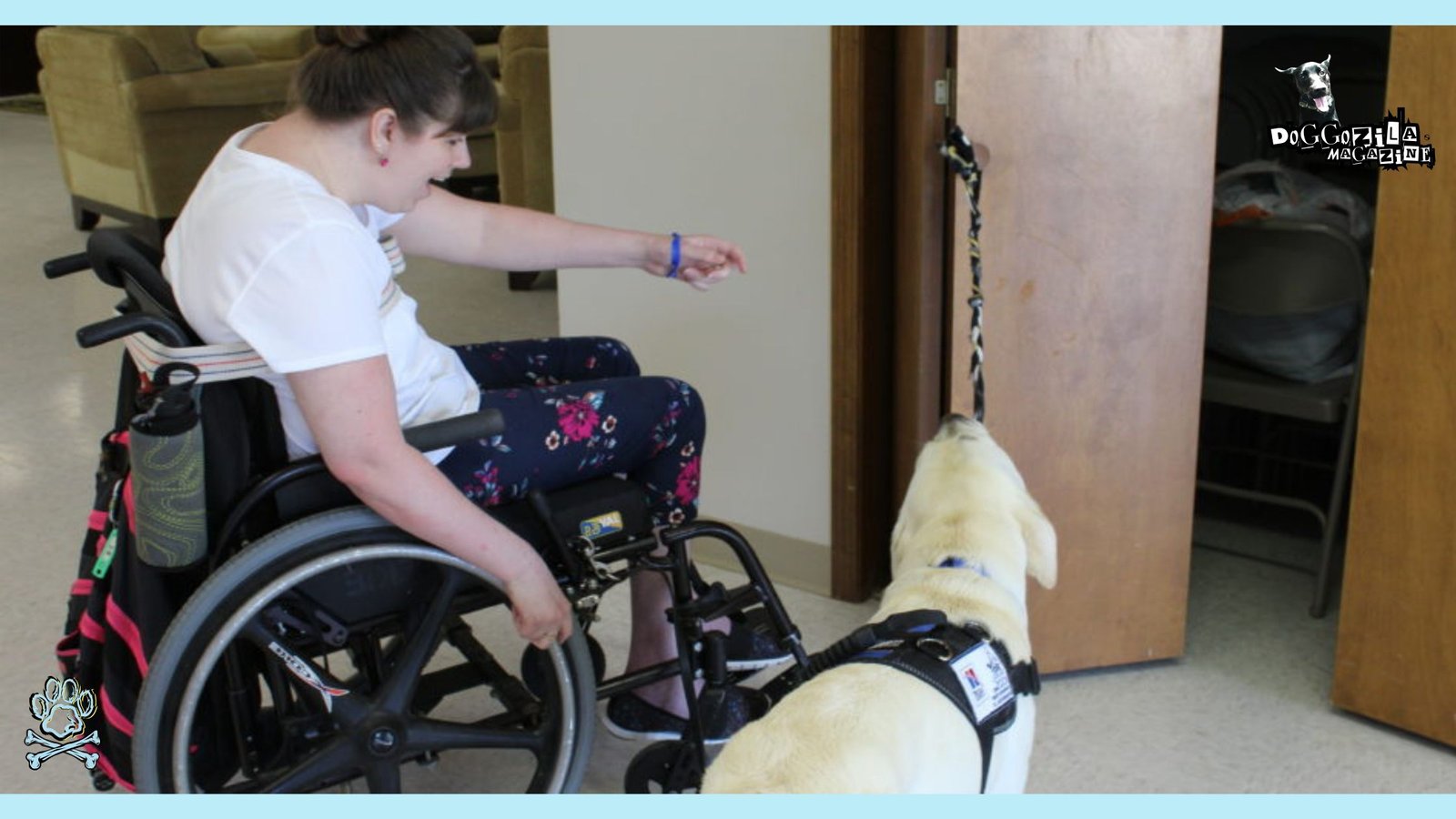
TRAINING SPECIFIC TASKS FOR SERVICE DOGS
Service dogs undergo extensive training to perform a variety of tasks that assist individuals with disabilities. These tasks are tailored to meet the specific needs of their handlers and can greatly enhance their independence and quality of life.
Guiding Visually Impaired Individuals
One of the most well-known tasks that service dogs perform is guiding visually impaired individuals. These highly trained dogs navigate their handlers through various environments, ensuring their safety and helping them navigate obstacles. With the aid of a harness and verbal cues, service dogs provide a reliable means of mobility for individuals who are blind or have low vision.
Detecting Medical Conditions
Service dogs are also trained to detect various medical conditions, such as diabetes, epilepsy, and allergies. Through their acute sense of smell, they can alert their handlers to potential issues before they occur. For example, diabetes alert dogs can detect changes in blood sugar levels and notify their handlers, allowing them to take necessary precautions or administer medication.
Providing Emotional Support
Emotional support is another critical aspect of a service dog’s role. These dogs are trained to provide comfort, reassurance, and emotional stability to individuals with psychiatric conditions, such as anxiety disorders or post-traumatic stress disorder (PTSD). By offering deep pressure therapy, creating physical barriers, and providing a calming presence, these dogs help alleviate symptoms and improve their handler’s overall well-being.
Assisting with Mobility
Service dogs can also assist individuals with mobility challenges by retrieving dropped objects, opening doors, or even providing stability and balance while walking. These tasks significantly enhance independence and allow individuals with mobility impairments to carry out everyday activities more easily and with confidence.
Performing Specialized Tasks
In addition to the aforementioned tasks, service dogs can be trained to perform specialized actions based on their handler’s specific needs. For example, a service dog might be trained to alert their handler to an oncoming panic attack or retrieve medication during an emergency. These specialized tasks are tailored to address the unique challenges faced by individuals with disabilities, enabling them to live more productive and fulfilling lives.
It’s important to note that the specific tasks a service dog performs depend on the handler’s individual requirements and the dog’s capabilities. By undergoing rigorous training, service dogs develop the skills and behaviors necessary to excel in their designated tasks, making them invaluable companions and allies for individuals with disabilities.
Remember, providing accurate and up-to-date information is crucial when discussing the training of service dogs. Always consult reputable sources, such as reputable service dog organizations and training programs, to ensure the information shared is reliable and trustworthy.
🔑 Key Points: Service dogs are highly trained animals that perform specific tasks to assist individuals with disabilities, providing them with the support and independence they need.”
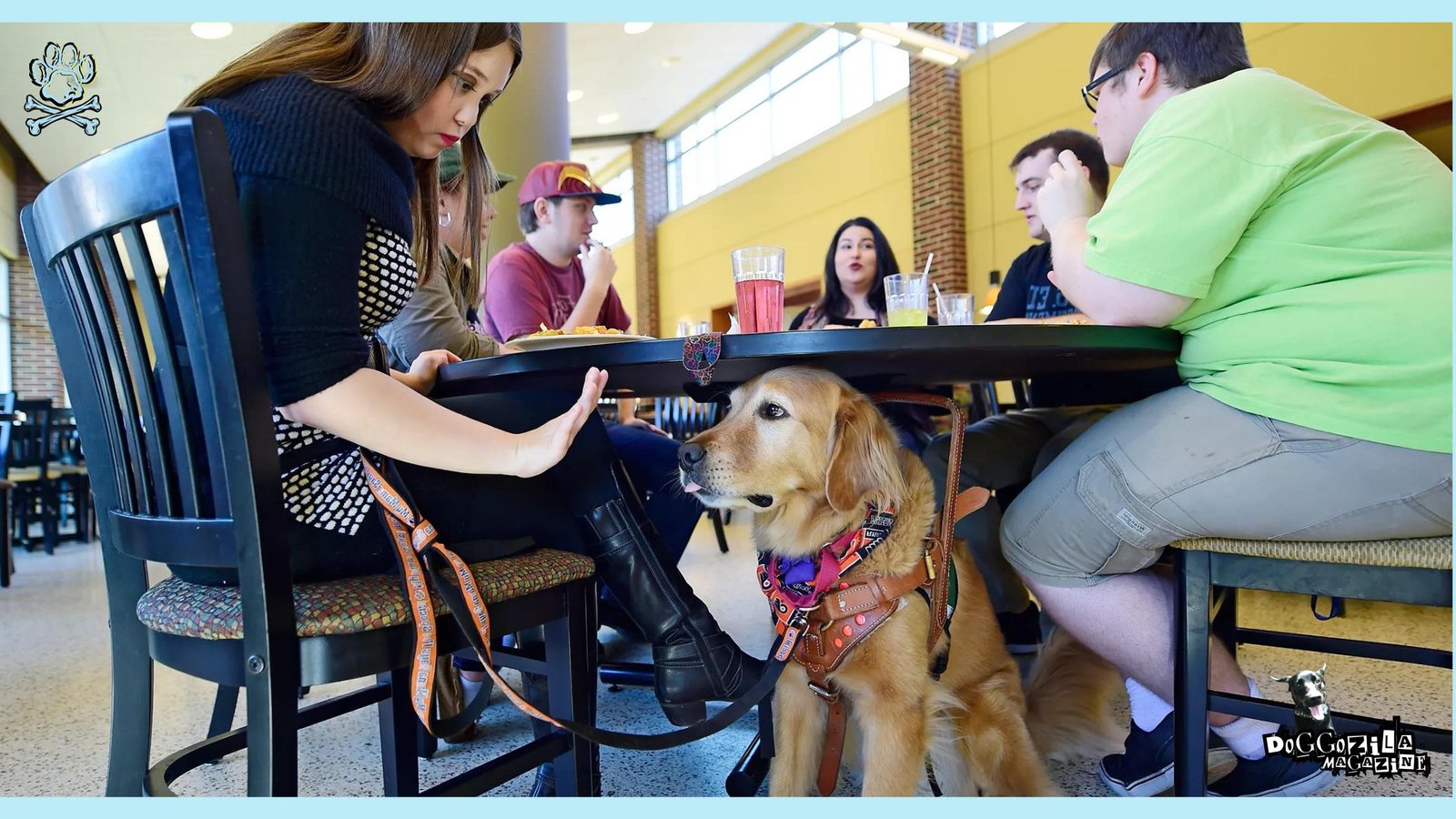
OWNER TRAINING VS. PROFESSIONAL TRAINING
When it comes to training a service dog, individuals have the option of choosing between owner training or professional training. Each approach has its own pros and cons, and the decision ultimately depends on the specific circumstances and preferences of the handler.
Pros of Owner Training
1. Cost-effective: Owner training can be more affordable as it eliminates the expenses associated with professional trainers.
2. Close bond: Training your own service dog allows for a stronger bond between handler and dog, fostering a greater sense of trust and understanding.
3. Tailored training: Owner trainers can customize the training program to address the specific needs and challenges of their disability.
Cons of Owner Training
1. Time-consuming: Training a service dog requires a significant time commitment as handlers need to dedicate hours each day to training and socialization.
2. Lack of expertise: Owners may lack the knowledge and experience of professional trainers, potentially leading to training gaps or inconsistencies.
3. Greater responsibility: Owner trainers assume full responsibility for their dog’s training and behavior, which can be overwhelming for some individuals.
Pros of Professional Training
1. Expert guidance: Professional trainers have the expertise and experience to effectively train service dogs, ensuring comprehensive training and adherence to standards.
2. Time-saving: Handlers save significant time as they don’t have to dedicate extensive hours to training and can focus on other aspects of their lives.
3. Certification credibility: Professionally trained service dogs often come with recognized certifications, bolstering their credibility in public spaces.
Cons of Professional Training
1. Higher cost: Professional training can be expensive, including the cost of the dog, training fees, and ongoing support.
2. Less ownership control: Handlers have less control over the training process and may feel less connected to a professionally trained dog.
3. Waiting lists: There may be waiting lists for programs that provide professionally trained service dogs, leading to potential delays in obtaining a dog.
Regardless of the chosen approach, owner involvement in the training process is crucial. Owners need to actively participate, learn alongside their dogs, and maintain consistent training once the dog is home.
🔑 Key Points: Ultimately, the decision between owner training and professional training should be based on the handler’s abilities, resources, and individual circumstances.
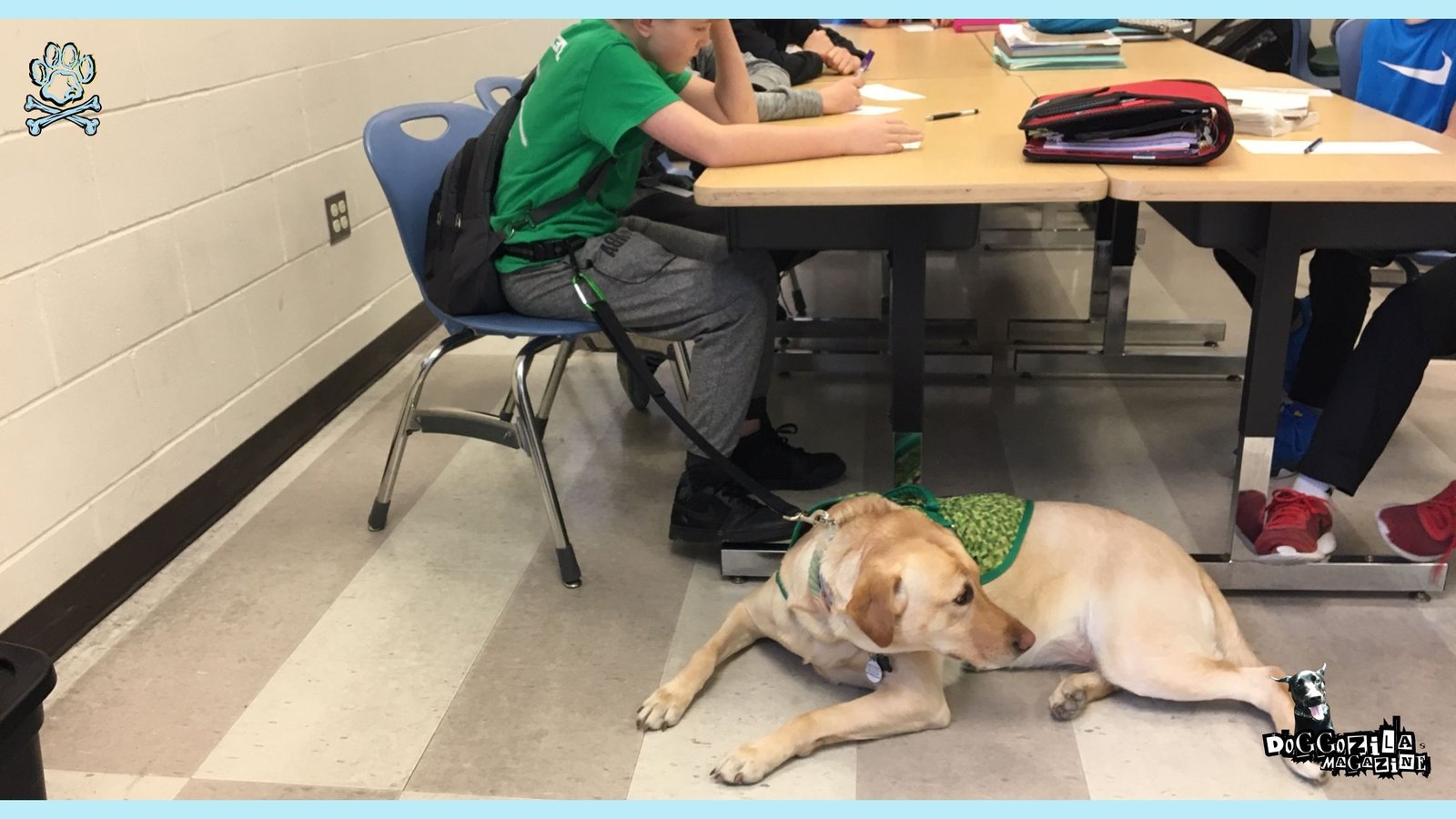
THE IMPORTANCE OF OBEDIENCE SKILLS
Teaching obedience skills to service dogs is of utmost importance in their training journey. Obedience forms the foundation for advanced task training and ensures that service dogs are reliable, well-behaved, and capable of assisting individuals with disabilities effectively.
Establishing a Strong Foundation
By instilling obedience skills from the beginning, service dogs develop the discipline and focus required to perform their duties reliably. This includes commands such as sit, stay, heel, and come. These basic commands help service dogs to maintain control, stay attentive, and respond promptly to their handlers’ instructions.
Enhancing Safety and Reliability
Service dogs are often tasked with specific actions that require a high level of trust and reliability. Solid obedience skills ensure that these dogs can work safely and consistently, even in challenging situations. Whether it’s assisting individuals with mobility issues, responding to medical alerts, or providing emotional support during stressful moments, obedience training enhances the service dog’s ability to perform their tasks effectively.
Promoting Public Access Rights and Etiquette
Obedience training also plays a crucial role in ensuring that service dogs can navigate public spaces with ease. Public access rights give individuals with disabilities the freedom to move around with their service dogs. Well-trained service dogs, who demonstrate proper behavior and obedience, help maintain the positive reputation and acceptance of service dogs in the community.
Building Trust and Bond
Through obedience training, the bond between a service dog and its handler strengthens. This bond is essential for effective communication and partnership between the pair. Obedience skills foster a sense of trust, understanding, and mutual reliance, making the service dog a true companion and a reliable teammate to the handler.
In conclusion, obedience skills are essential for service dogs as they lay the groundwork for advanced task training, enhance safety and reliability, promote public access rights, and strengthen the bond between the service dog and its handler.
🔑 Key Points: By investing time and effort into obedience training, individuals can ensure that their service dogs excel in their duties and provide invaluable support.
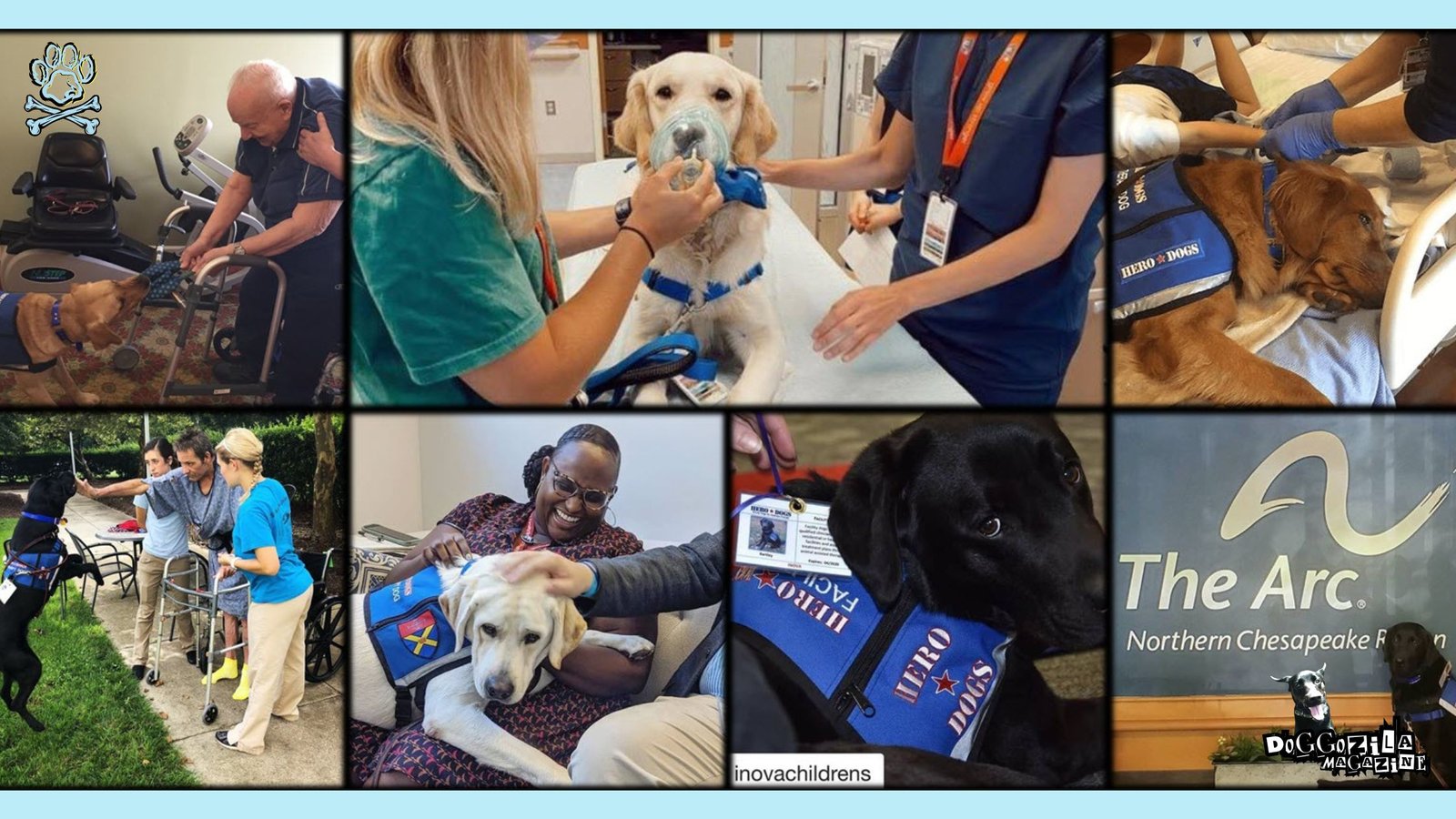
NAVIGATING PUBLIC SPACES
When it comes to navigating public spaces with a service dog, it’s important for handlers to be aware of the laws, rights, and responsibilities associated with their furry companions.
Here are some key guidelines to keep in mind:
Understand the Laws and Rights
As a service dog handler, it’s crucial to familiarize yourself with the laws that protect your rights and the rights of your service dog. In the United States, the Americans with Disabilities Act (ADA) grants individuals with disabilities the right to be accompanied by their service dogs in public places. This means that service dogs are allowed to enter restaurants, stores, hotels, and other public spaces, regardless of any “no pets” policies. It’s essential to stay informed about the specific regulations in your country or state.
Be Prepared with Documentation
While service dogs are not required to wear special vests or badges, it can be helpful to carry documentation that verifies your dog as a trained service animal. This documentation can include a letter from your healthcare provider or a certification from a recognized training organization. Although it’s not legally mandated to present this documentation, it can help facilitate a smoother experience when accessing public spaces.
Practice Proper Etiquette
Maintaining proper behavior and etiquette is essential when navigating public spaces with a service dog. Your dog should be well-behaved, calm, and focused on their tasks. They should not bark, jump on people, or exhibit any aggressive behavior. Additionally, it’s important to keep your service dog on a leash or harness at all times unless specific tasks require them to be off-leash.
Educate Others
Not everyone is familiar with the concept of service dogs or their rights. When encountering curious individuals or business owners who might not be aware of the regulations, it’s essential to remain patient and informative. Educate others about the role of service dogs and their importance in assisting individuals with disabilities. By spreading awareness, you can contribute to a more inclusive and understanding society.
Respect Everyone’s Space
While navigating public spaces, it’s crucial to respect the personal space and comfort of others. Be mindful of individuals who may have allergies or fears of dogs. If someone expresses discomfort or allergies, try to keep a reasonable distance and navigate around them. Respecting everyone’s space helps foster positive interactions and promotes a harmonious environment for all.
Remember, as a service dog handler, you have the right to access public spaces with your well-trained and properly-behaved service dog. By understanding the laws, practicing good etiquette, and educating others, you can navigate public spaces confidently and ensure a positive experience for both you and your service dog.
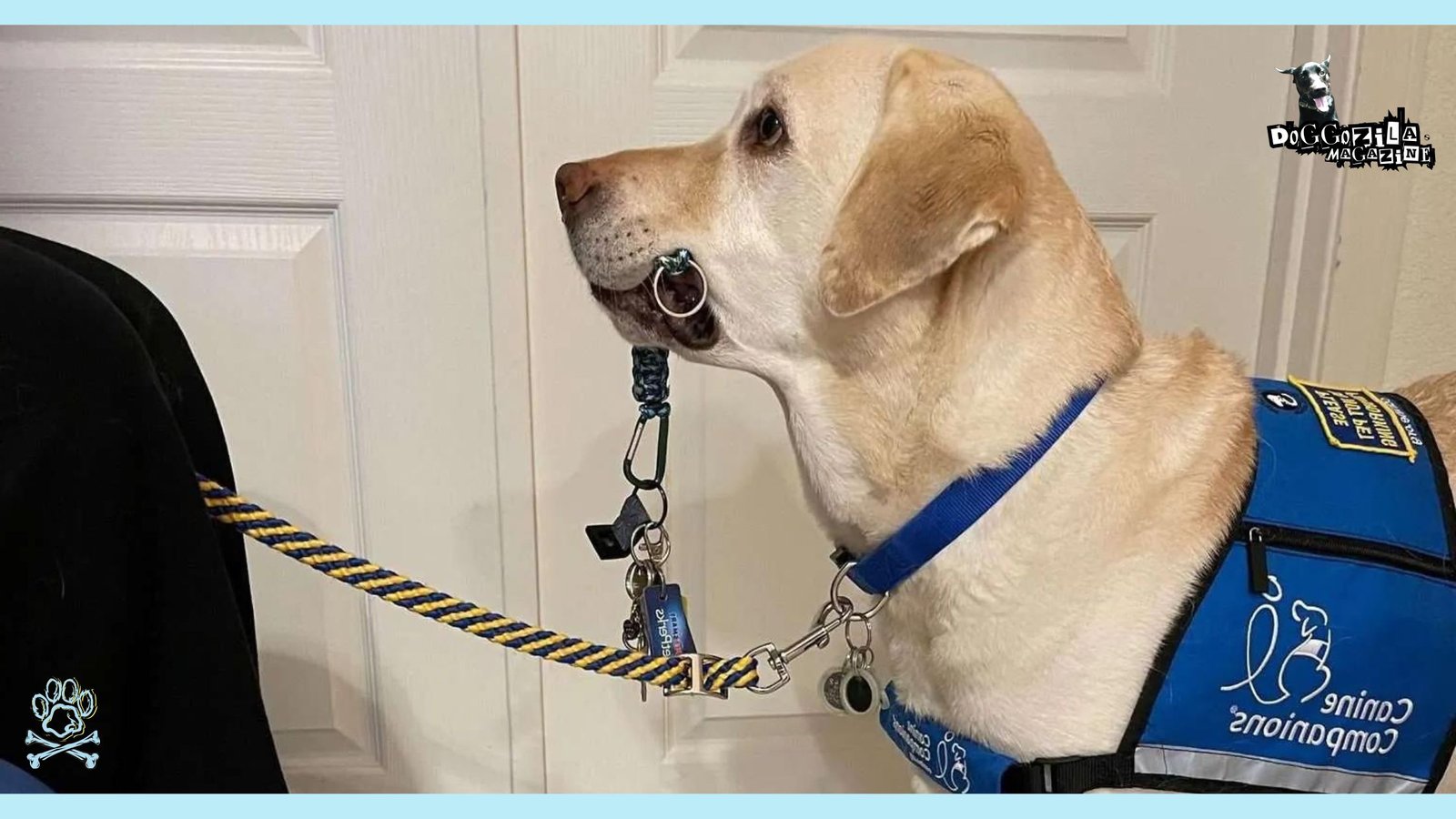
ADVANCED TRAINING TECHNIQUES
When it comes to training a service dog, advanced techniques can significantly enhance their abilities. These techniques go beyond basic obedience skills and focus on specialized tasks that are tailored to meet the unique needs of individuals with disabilities. Incorporating concepts such as scent work, agility training, and problem-solving skills can further develop the capabilities of a service dog.
3 In-Depth Training Steps (Scent, Agility and Problem-Solving Skills)
- Scent Work: One valuable technique utilized in service dog training is scent work. Dogs possess an exceptional sense of smell, which can be harnessed to detect specific scents associated with various medical conditions. By training dogs to identify and alert to these scents, they can help individuals with conditions such as diabetes, seizures, or even certain types of cancer. The process involves teaching the dog to detect and indicate the scent through positive reinforcement.
- Agility Training: Agility training is another effective method to enhance a service dog’s physical abilities and mental acuity. By navigating through obstacle courses, service dogs develop coordination, balance, and focus. This training not only improves the dog’s overall fitness but also helps them handle diverse environments and scenarios with ease. Additionally, agility training strengthens the bond between the handler and the dog, fostering a collaborative and trusting relationship.
- Problem-Solving Skills: Service dogs often encounter unique situations that require adaptive thinking and problem-solving abilities. Training techniques that stimulate their problem-solving skills can be invaluable in such scenarios. This involves introducing challenges and puzzles for the dog to solve, encouraging them to use their cognitive abilities to find solutions. Problem-solving training can empower service dogs to think independently and make appropriate decisions when encountering unfamiliar situations.
Advanced Training Under Supervision Of Experienced Trainers
By incorporating these advanced training techniques into the overall training program, service dogs can further excel in their role. However, it’s crucial to remember that advanced training should only be conducted under the supervision of experienced trainers. They possess an in-depth understanding of the specific requirements of service dog tasks.
🔑 Key Points: With proper training and guidance, service dogs can become invaluable companions, providing the necessary support and assistance to individuals with disabilities.
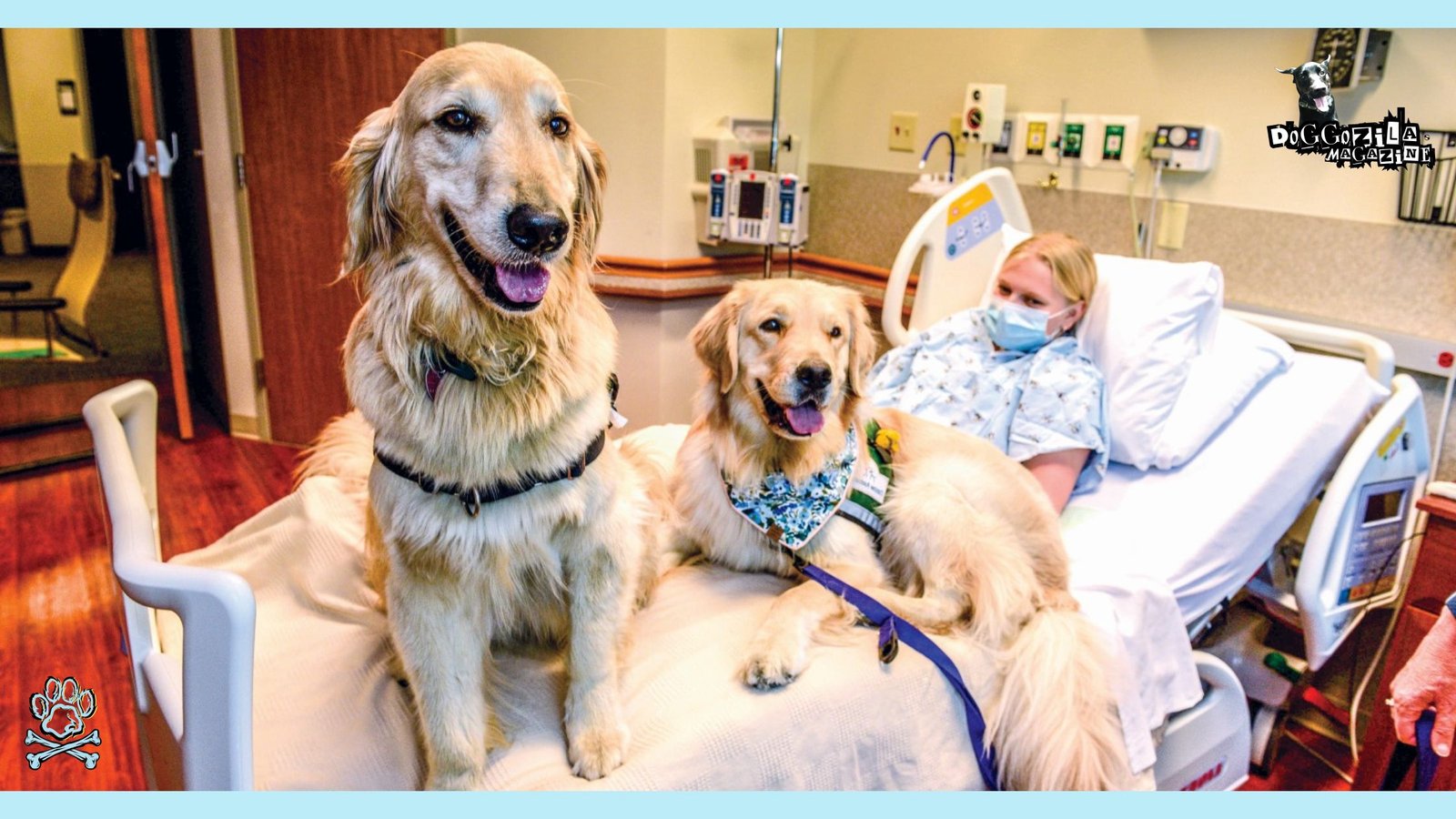
FAQ: COMMON QUESTIONS ABOUT SERVICE DOG TRAINING
Training a service dog can raise many questions and concerns, especially for individuals who are new to the process. In this section, we address some of the most common questions about service dog training.
How much does service dog training cost?
The cost of training a service dog can vary depending on several factors. The training program chosen and the specific tasks the dog needs to learn. On average, professional service dog training programs can range from $5,000 to $25,000 or more. However, it’s important to note that there are also options for owner training. Which can be more affordable but require a significant time commitment and access to appropriate training resources.
How long does it take to train a service dog?
The duration of service dog training can vary based on few factors. Usually they are the complexity of the tasks being taught, the dog’s temperament and abilities, and the consistency of training. On average, it can take anywhere from six months to two years to fully train a service dog. Remember, training is an ongoing process that continues throughout the dog’s working life to maintain skills and reinforce behaviors.
Are certifications necessary for service dogs?
Certifications for service dogs are not required by law in many countries, including the United States. However, obtaining appropriate certifications can help establish credibility and provide documentation of a dog’s training and abilities. It’s important to research and understand the local laws and regulations regarding service dogs in your area. This is to ensure compliance with any documentation requirements.
Can I train my own service dogs?
Yes, it is possible to train your own service dog. However, it’s crucial to have a good understanding of the training process. It’s important also to know the specific tasks and behaviors required for your dog to perform. Owner training requires a significant time commitment, consistency, and access to resources. Always consult with professional trainers or reputable training programs for guidance and support.
Can any breed be a service dogs?
While any breed of dog has the potential to become a service dog, certain breeds are more commonly trained for this role. This is due to their temperament, intelligence, and physical traits. Labrador Retrievers, Golden Retrievers, German Shepherds, and Standard Poodles are among the breeds often selected for service dog training.
Ultimately, the most important factor is choosing a dog with the right temperament and abilities to perform the necessary tasks. Remember, every service dog training journey is unique. It’s essential to consult with professionals and experts to ensure the appropriate training for your specific needs and requirements.









